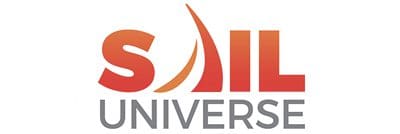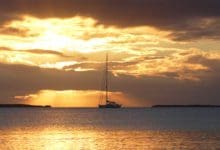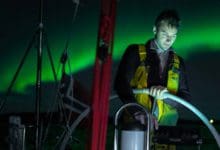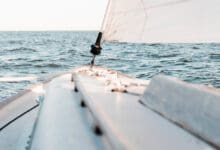Faced with the tough decision of whether to take on the impending storm by diving south on a quicker but more risky route or escaping the worst of the weather to the north, each of the seven teams have now thrown their cards on the table.
In a bold break from the rest of the fleet, British skipper Dee Caffari opted to take her young Turn the Tide on Plastic crew furthest to the north in the hope of dodging the worst of the system’s howling winds and forecast for enormous seas.
This is in contrast to the strategies of leg leader Dongfeng Race Team, MAPFRE, team Akzonobel, Team Brunel and Team Sun Hung Kai/Scallywag, who have chosen to roll the dice and take the southern option.
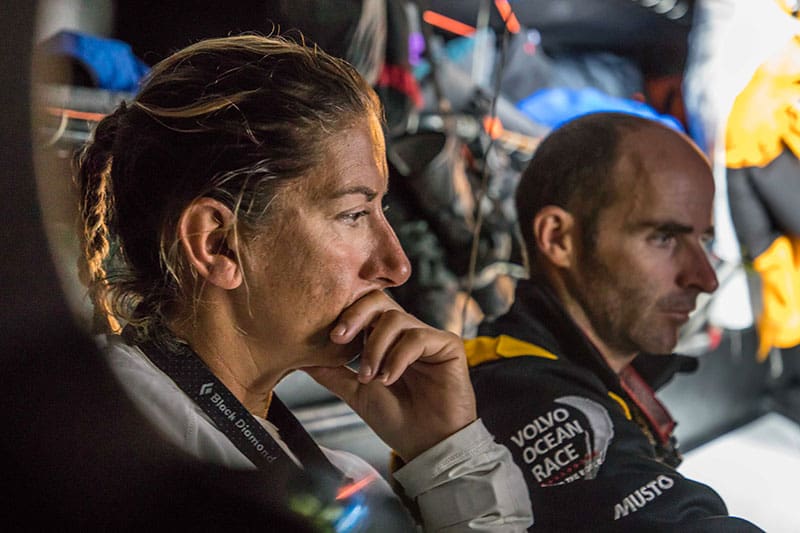
Caffari, one of the world’s most experienced and respected offshore sailors, is known for her seamanship – and as most of her team have never faced the Southern Ocean before, she and navigator Nico Lunven have picked a route that gives them more options, including not needing to throttle back as much as her counterparts in the south.
But as the storm is more than 400 nautical miles wide and moving quickly east, being swallowed up by it is inevitable – and it has been playing heavily on Caffari’s mind.
“I have had bad guts for 24 hours and I was thinking it may have been something I have eaten or drunk, but that is highly unlikely,” she wrote to race headquarters in a blog post.
“If I was honest it may be the responsibility sitting heavy on me to make the right decision and get boat and team through the next 48 hours unscathed. It is turning my stomach in knots, something I have never experienced before.”
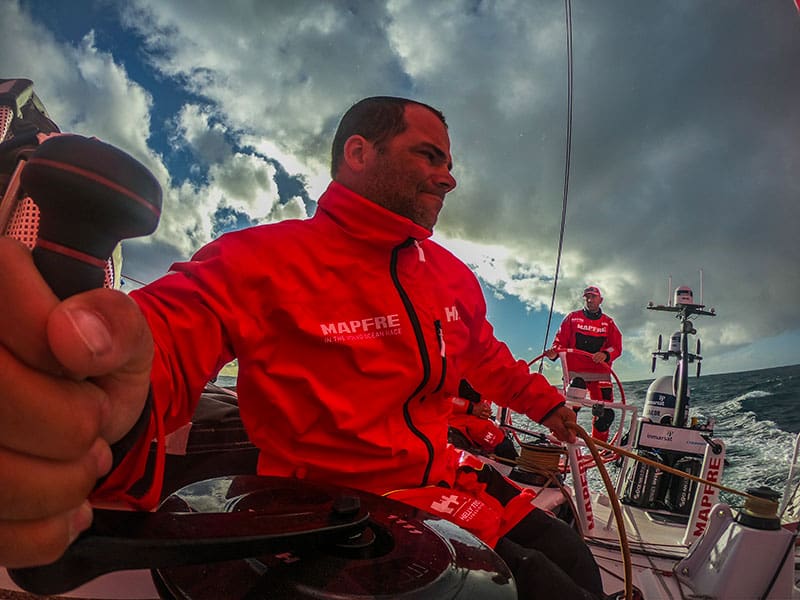
Meanwhile those on the southern route are facing challenges of their own. When the front hits they will almost certainly experience stronger winds, and unlike Turn the Tide on Plastic to the north they have less options to escape.
A virtual exclusion zone south of the fleet has been implemented by race control to keep the fleet away from Antarctica’s ice fields, and the leaders are likely to gybe along the ice limit as they skirt the exclusion zone.
“I don’t think we will be doing any racing over the next few hours,” Dongfeng skipper Charles Caudrelier said. “We want to sail fast but the main priority is not to break the boat or the crew.”
MAPFRE skipper Xabi Fernandez, just eight miles behind Dongfeng, added: “It’s going to be rough and cold but it’s going to be good fun.”
Around 75 miles north of the leading pack Vestas 11th Hour Racing were also bracing themselves for a battering. At 1300 UTC Charlie Enright’s crew were by far the fastest in the fleet, notching up 22.5 knots compared to Dongfeng’s 16.3.
“Feels like we’re manning battle stations and preparing for war,” navigator Simon Fisher said. His team may have chosen the best option, a middle ground to the north of the pack, but still in touch and with more options.
The next 48 hours will be crucial to success in Leg 3.
